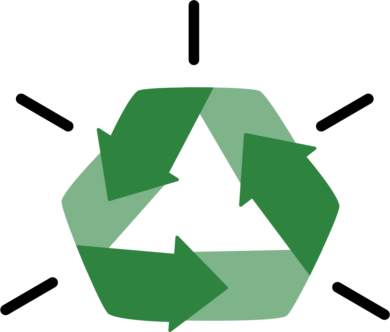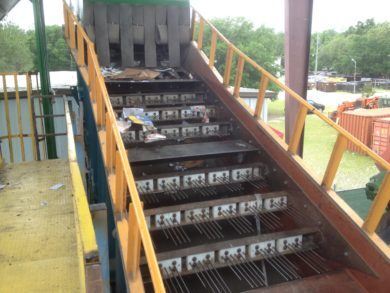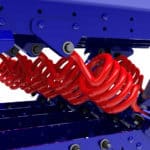Recycling can be an equipment- and resource-intensive process, with many facilities preferring dual or multi-stream processing to expedite the filtering of different materials. But single stream recycling also offers benefits to consumers and facilities alike. So which one is right for your recycling facility?
Before digging into the argument of which method of recycling is more efficient, it is important to understand both methods thoroughly.
What Do Single and Dual Stream Recycling Have in Common?
Included in both dual and single-stream recycling methods are two categories of materials:
Category #1: Fibers
|
Category #2: Containers
|
After these two categories, there are, of course, remaining materials that can be recycled at specialty recycling facilities. These materials often have designated drop-off locations and require more complex processes.
Typically not recyclable thru local pick up services:
- Styrofoam
- CDs, DVDs
- Plastic bags or film plastic
- Batteries
- Electronics
How Do Single and Dual Stream Recycling Differ?
While both types of recycling help process the different categories of material, they are innately different in operation.
Single stream recycling
Single stream refers to the process of mixed recycling materials (categories 1 & 2), including glass, paper, plastic, and metal. In this process, everything is “commingled” in a slurry of recyclables and will need to be extensively sorted and processed before the materials eventually end up in the correct categories. For recycling facilities, this means they pick up one bin from consumers’ homes or offices, a preferred method for consumers who don’t have the time or desire to sort by category or material.
Once collected, the mixed materials are brought to the material processing facility, where it’s presorted by facility employees and loaded onto vibratory equipment that is designed to separate material by weight and size. These decks are also magnetized to make the collection of metals easier. As you can see in the diagram below, General Kinematics’ vibratory recycling equipment has three vibratory screens and two air stream filters that help separate out materials more effectively.
Dual stream recycling
Dual stream recycling, on the other hand, is where the consumer sorts their recycled goods before they are picked up by the recycling facility. The recyclables are sorted by the consumer into (Category 1) paper/cardboard and (Category 2) metals/glass/plastic. Once the recyclables are received, they are sorted for purity before being sent off to be refactored into the new products.
Benefits of Single vs. Dual Stream
Although they are different in operation, there are benefits to each method that may make one preferable to the other for individual facilities.
Single stream benefits
The biggest benefit to single-stream recycling is customer convenience; the public does not have to do the sorting themselves. Less work up front means more are willing to recycle, as it seems like less of a time commitment. More participation also leads to more materials being processed, ultimately providing recyclers with more product at the end of the day.
Dual stream benefits
The somewhat pre-sorted material that goes with dual stream processing offers a less contaminated product to begin with. This allows recyclers to benefit from more pure materials at the end of their process and higher reclamation rates in comparison to single-stream operations. Of course, this results in higher commodity prices for their finished materials.
Single and Dual Stream Challenges
While there are obvious benefits to both types of recycling, there are inherent challenges, as well.
Single stream challenges
Single stream challenges revolve around constantly trying to reduce contamination from materials mixing. The biggest contamination comes from broken glass. Not only is glass extremely abrasive on processing equipment, but if glass particles get embedded into fiber, the value is diminished. In addition, when bottles, cans, and containers come into contact with paper, the residual liquid that had been in those containers will then be absorbed by paper products sharing the bin. Due to the lengthy sorting process, overall sorting costs may increase. The amount of material reclaimed and quality of material reclaimed is also at risk of diminishing within the single sort process.
Dual stream challenges
Dual stream challenges, on the other hand, are more likely to occur from user error. While single stream makes it easier for consumers to recycle, dual stream is sometimes seen by consumers as more work. There is also a greater risk of contamination causing issues for dual stream due to the specific processes for each type of material. As with single stream’s higher processing costs, dual stream typically suffers from higher collection costs because the number of bins automatically doubles.
Is Single or Dual Stream More Cost-effective?
The main argument in the single vs. dual stream processing debate has boiled down to which process is more cost-effective. Unfortunately, there is not a clear answer. Many people claim that single stream is more costly because of the cost of equipment and lack of separation ability due to the extreme contamination from material intermingling. However, there are equally as many claims that dual stream is costly due to the complicated collection process; more bins require a more specialized truck, as well as longer pick up times.
Most locations have their own preference for recycling processes and it comes down to what works best for the community. As technology gets more advanced, each process becomes more viable.
General Kinematics’ Recycling Solutions
With the development of equipment such as the Rod Deck FINGER-SCREEN™, single-stream recyclers are seeing better separation and the ability to recover more commodities at the same time. On the flip side, dual stream is seeing better contamination handling with equipment like the FINGER-SCREEN Velocity™. Both methods prevent tons of garbage from ending up in landfills, thanks to consumers who are committed to changing the way we think about recycling.
If you are looking for a way to improve your single or dual stream recycling system, contact General Kinematics. With decades of experience in the recycling industry, our Resource Recovery specialists will work with you to innovate your recycling process.









